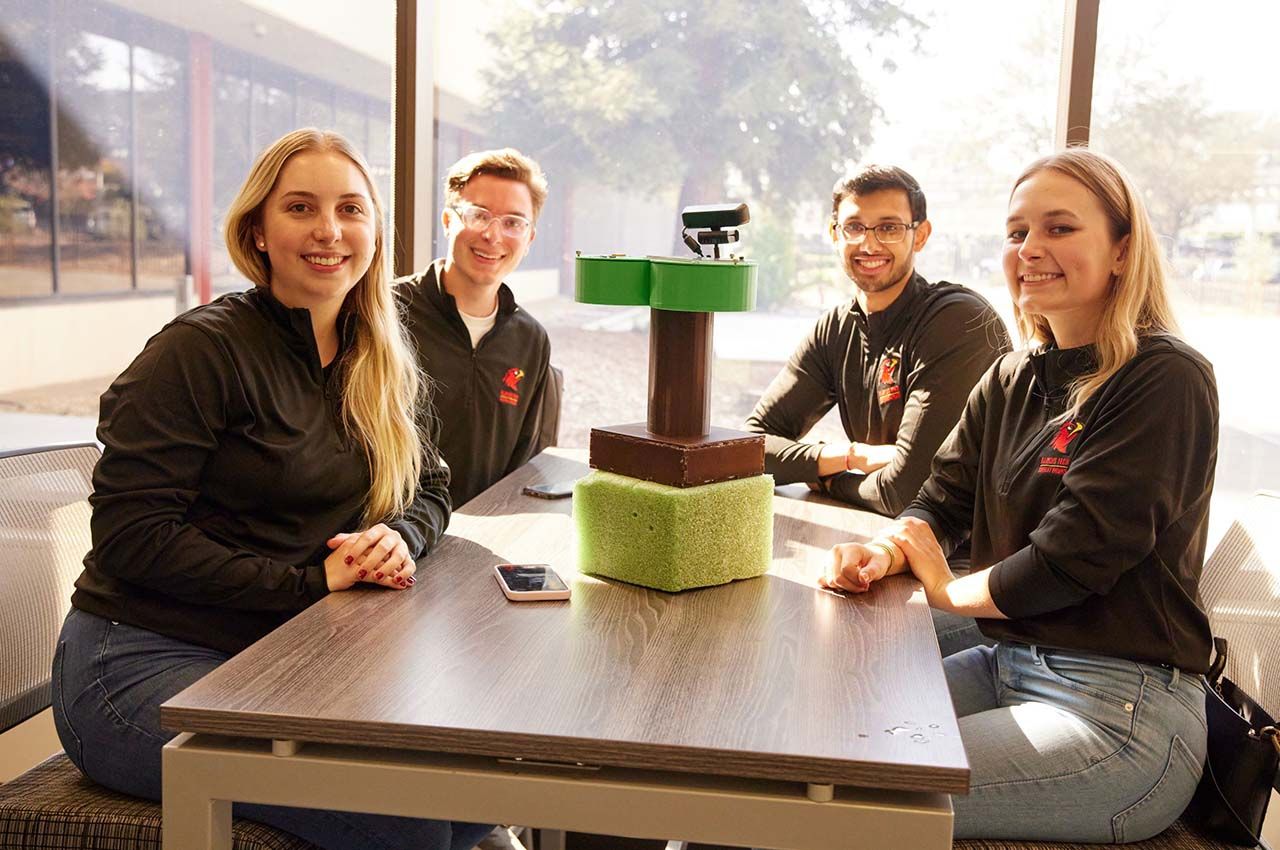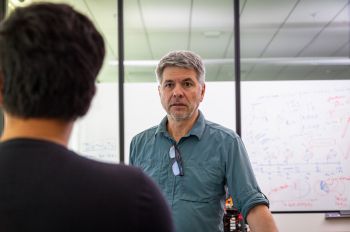Growing Success: Illinois Tech Students Claim Top Prize in Keysight Innovation Challenge

A team of Illinois Institute of Technology students took the top prize in the Keysight Innovation Challenge 2022 for its novel “Tree of Life” Internet-of-Things device, which collects data from the soil and atmosphere around it to determine the best trees to plant for maximum carbon dioxide capture and optimum growing conditions.
The Illinois Tech team came in first out of an international group of 52 teams after giving its final presentation on October 29, 2022.
The team’s impressive design won the students $30,000 in cash, as well as $10,000 worth of Keysight test equipment for Illinois Tech.
The team includes Chloe Rubinowicz (EE, M.S. EE 5th Year), Saurabh Saluja (CPE, M.S. CPE 5th Year), Colin Prochnow (CCSE, M.S. CPE 5th Year), Kaya Jones (CS 2nd Year), Anthony Banuelos (CCSE, M.A.S. CYF 5th Year), and Katarzyna Staron (ME, M.S. ME 5th Year).
The team says Tree of Life was designed as a response to the urgent need for solutions to curb carbon emissions.
“If we don’t act now, the consequences will be irreversible,” says Rubinowicz, the Illinois Tech team lead.
Soil and forests are the two most essential carbon sinks on Earth, and Tree of Life is designed to maintain and protect both.
The device is planted into the ground, where it collects information about the soil nutrients, measures local carbon dioxide levels, and uses a neural network to identify surrounding trees or other obstructions. The team designed an algorithm that then evaluates these data against a database of more than 2,000 trees and recommends the optimum tree for carbon sequestration and tree longevity to plant in that location.
The team has also built a website for the device that provides further analysis of the data collected including the estimated impact of planted trees, cost estimates, and recommendations of local nurseries where recommended trees can be purchased.
The analyses and recommendations provided can also be scaled to large areas using additional inputs such as satellite imagery.
“According to NASA, it would take 500 billion trees to offset the carbon emissions since 1990, which is a great undertaking. Luckily with our device, we can decrease the amount of trees by 30 percent,” says Saluja. “There’s no better time to start than now,”
“Our team learned and experienced more from this project than anything else we’ve done before,” adds Rubinowicz. “This has served as a pivotal moment for us, learning to work with a team to develop an idea and actualize it. Winning this competition has been surreal, and we’re so excited to see where our team goes from here.”
The 2022 Keysight Innovation Challenge asked students to create an IoT innovation that provides carbon neutrality corporate site monitoring, multi-site monitoring, or community monitoring. The device must be able to communicate wirelessly, be easy to deploy by a non-expert in a secure fashion, and must handle sensitive data.
“It was fascinating to see the wide range of innovative solutions each student team created when posed the same challenge: to design an IoT device that will help the world reach net zero,” said Jeff Harris, vice president of portfolio and corporate marketing at Keysight, who also served as a judge and co-sponsor of the Keysight Innovation Challenge. “Each team looked at the question from a different angle and formed a unique solution. I’m excited for the future when we see this level of innovation and enthusiasm from our next generation of engineers.”
“We added another layer of criteria to this year’s challenge, requiring that all teams were woman-led and had at least equal representation of women to men,” said Renee Morad, Keysight Innovation Challenge program lead. “It was inspiring to see such diversity on the stage and to shine a spotlight on today’s women in STEM who are leading their teams and leading the way for future generations of innovators.”
Photo: Some members of the winning Illinois Institute of Technology team (from left), Chloe Rubinowicz, Colin Prochnow, Saurabh Saluja, and Katarzyna Staron with their prototype (provided)


![[From left to right] Associate Professor of Biomedical Engineering Kenneth Tichauer and Professor of Electrical and Computer Engineering Jovan Brankov](/sites/default/files/styles/width_350/public/2024-11/tichauer-brankov_1280x850.jpg?itok=hxdjBhlU)

